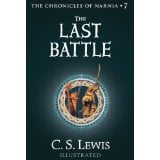Cover Photo by Françoise Foliot *
I realize that is entirely possible for me to cross the line from passionate commentary to personal attack. Please know that I have no personal animus towards any of the writers and leaders I may mention in these posts…but I am driven to speak out against a trend that I feel is extremely dangerous and that will, if left unchallenged, bring about dire consequences for the Body of Christ. That trend involves the phenomenon known as Narrative Theology. Another variant has been dubbed Open Source Theology.
Open Source is a computer term. Wikipedia is open source…that is to say that anyone can post ‘their version’ or ‘their take’ on the facts.
I recently had a conversation with my sister-in-law Gail, and she shared something that got me to thinking. We were talking about the church and she used the phrases, “Shape-Shift” and “Sheep- Shift.” We were discussing the trend these days for churches to be continually re-branding themselves and shifting in an effort to remain relevant.
As we were talking, I remembered the C.S Lewis classic, The Last Battle…the last book in the series known as The Chronicles of Narnia. The story is an apocalyptic account of the last days of Narnia.
In the last days of Narnia, far up to the west beyond Lantern Waste and close behind the great waterfall, there lived an ape. He was so old that no one could remember when he had first come to live in those parts, but he was the cleverest, ugliest, most wrinkled ape you could imagine….There were very few talking beasts or men or Dwarfs or people of any sort, in that part of the wood, but Shift had one friend and neighbor who was a donkey called Puzzle….”
C.S. Lewis, The Last Battle, Book 7 in The Chronicles of Narnia p.1

The story line goes something like this. Shift (who is cunning), and Puzzle (who is naïve and gullible) implement a scheme to mislead the Narnians about who Aslan the Great Lion is…and more to our point…what He is like.
Shift decides to take a dead lion’s carcass found in Cauldron Pool and fashion a covering for the bewildered donkey Puzzle
The skin was very heavy for him to lift, but in the end, with a lot of pulling and pushing and puffing and blowing, he got it onto the donkey. He tied it underneath Puzzle’s body and he tied the legs to Puzzle’s legs and the tail to Puzzle’s tail. A good deal of Puzzle’s grey nose and face could be seen through the open mouth of the lion’s head. No one who had ever seen a real lion would have been taken in for a moment. But if someone who had never seen a lion looked at Puzzle in his lion skin, he just might mistake him for a lion, if he didn’t come too close, and if the light was not too good, and if Puzzle didn’t let out a bray and didn’t make any noise with his hoofs.
‘You look wonderful’ said the ape. ‘If anyone saw you now, they’d think you were Aslan the Great Lion Himself.”
‘That would be dreadful’ said Puzzle‘No it wouldn’t’ said Shift. ‘Everyone would do whatever you told them.’
C.S. Lewis, The Last Battle, Book 7 in The Chronicles of Narnia p.9 (emphasis mine)
The chapter ends with this conversation between Puzzle and Shift,
“Well then, that’s settled’, said the ape, ‘You will pretend to be Aslan, and I will tell you what to say.’
‘No, no, no,’ said Puzzle ‘Don’t say such dreadful things. It would be wrong Shift. I may not be very clever but I know that much. What would become of us if the real Aslan turned up?’
‘I’d expect He would be very pleased’ said Shift, “probably He sent us the lion skin on purpose. So that we could set things right. Anyway, He never ‘does’ turn up you know. Not now-a-days.’
At that moment there came a great thunderclap right overhead and the ground trembled with a small earthquake. Both the animals lost their balance and were flung on their faces.
“There’ gasped Puzzle, as soon as he had breath to speak. ‘It’s a sign, a warning. I knew we were doing something dreadfully wicked. Take this wretched skin off me at once.’
‘No, no,’ said the ape (whose mind worked very quickly.) It’s a sign the other way. I was just going to say that if the real Aslan, as you call him, meant for us to go on with this, he would send us a thunderclap and an earth tremor. It was just on the tip of my tongue, only the sign itself came before I could get the words out. You’ve got to do it now Puzzle. And please let’s not have any more arguing. You know you don’t understand these things. What could a donkey know about signs?’
Ibid, pp.10-11
If you didn’t look too closely…. And if the light was not too good….
Note how the clever ape changed the narrative on the fly and manipulated the events to suit his purpose. I for one do not want to believe that Christians would ever intentionally craft a narrative, and then change it regularly to suit a purpose. But what my sister- in-law said does in fact take place…Some Christians are into ‘shape-shifting’, and the result is ‘sheep-shifting’…shifting, that is, from a position of certainty about What God says about Himself in His Word, to a more culturally inclusive, gooey, flexible narrative that can be tweaked to adapt to the latest ‘trending now’ ‘open-source’ consensus.
Next time we will get into the actual history of Narrative Theology. For now let us comfort ourselves with this from God’s Word…
”The wrath of God is being revealed from heaven against the all the godlessness and wickedness of men who suppress the truth by their wickedness, since what can be known about God is made plain to them….For although they knew God, they neither glorified Him as God nor gave thanks to Him, but their thinking became futile, and their foolish hearts were darkened and they became fools. And exchanged the glory of the immortal God for images made to look like mortal man and birds and animals and reptiles.”
Romans 1:18-23 Emphasis mine
We need neither an ape nor a donkey to tell us who our God is or What He has already said about Himself in His Word.
Dr. J.
* By Françoise Foliot – Private collection Wikimédia France, Paris, CC BY-SA 4.0, https://commons.wikimedia.org/w/index.php?curid=83871486
